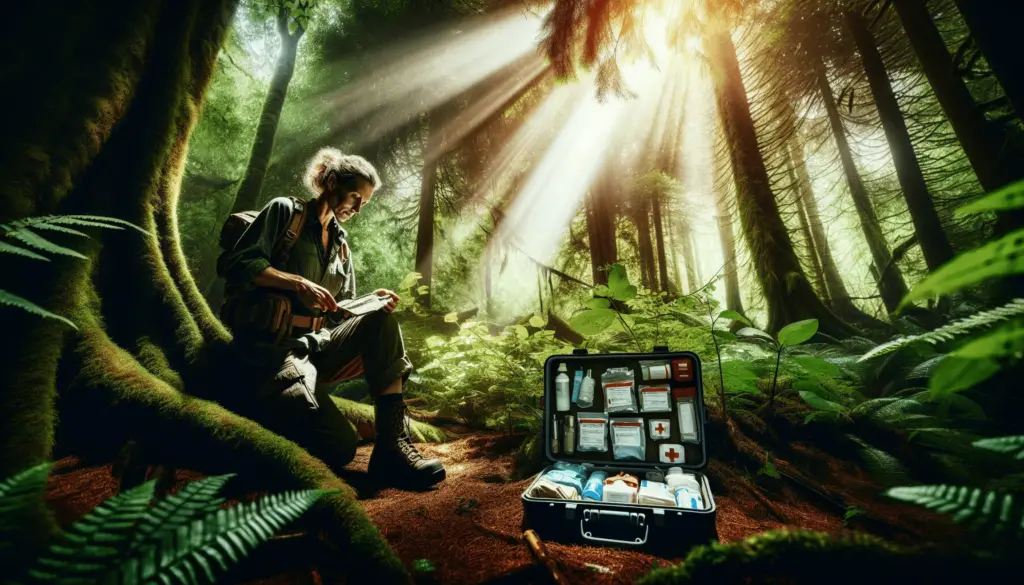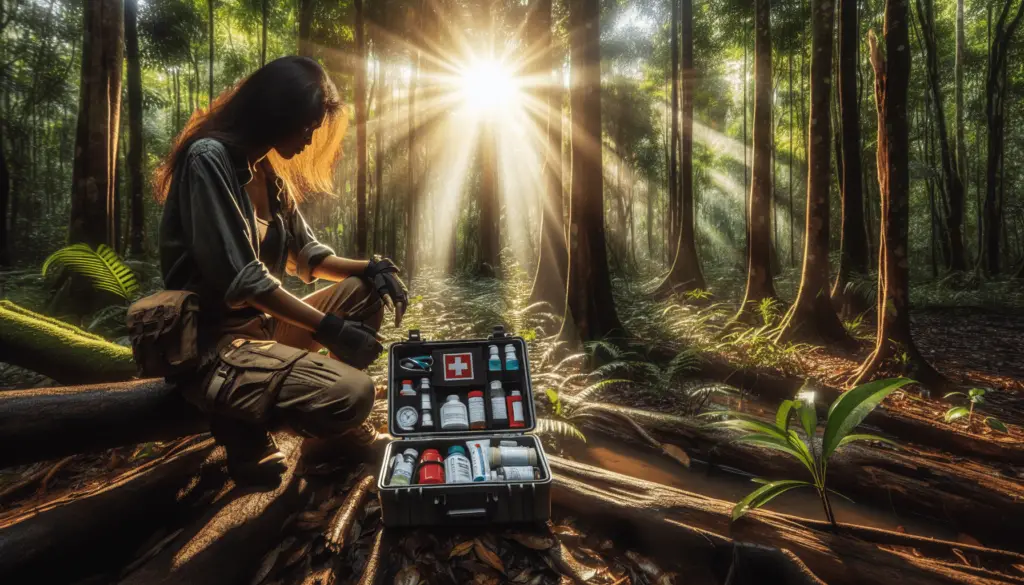Are you prepared to handle medical emergencies in the wilderness? Being able to provide first aid in the wild is crucial for your safety and the safety of others around you. Whether you enjoy hiking, camping, or any other outdoor activity, having the knowledge and skills to administer first aid can make all the difference in an emergency situation. In this comprehensive guide, you will learn the essential wilderness first aid techniques and protocols every prepper should know to stay safe in the great outdoors. Let’s get started!
Understanding Wilderness First Aid
In the wilderness, medical help may not be readily available, making it essential to have basic first aid skills. Wilderness first aid differs from urban first aid due to the lack of immediate medical assistance. You must be prepared to handle injuries and medical emergencies with limited resources. Understanding the principles of wilderness first aid will help you act quickly and effectively in critical situations.
What is Wilderness First Aid?
Wilderness first aid involves providing emergency medical care in remote and natural settings. It focuses on treating injuries and illnesses that occur outdoors, far from hospitals or medical facilities. Having the knowledge of how to stabilize a patient, manage shock, and treat common outdoor injuries is vital for anyone spending time in the wilderness.
Preparation and Planning
Being prepared is key to effectively managing medical emergencies in the wilderness. Taking the time to plan and pack the necessary supplies can make a significant difference in the outcome of an injury or illness. As a prepper, being proactive in your approach to wilderness first aid will ensure you are ready for any situation that may arise.
Preparing a Wilderness First Aid Kit
Assemble a comprehensive first aid kit specifically tailored for the outdoors. Include essential items such as bandages, gauze pads, adhesive tape, antiseptic wipes, scissors, tweezers, a splint, and any necessary medications. Keep your kit organized and easily accessible in your backpack or gear. Remember to check your supplies regularly and restock any items that have expired or been used.
Creating a Wilderness First Aid Plan
Develop a plan for responding to medical emergencies in the wilderness. Establish communication protocols, designate responsibilities among your group members, and identify nearby resources such as shelters, water sources, and evacuation routes. Practice scenarios and rehearse your response to ensure everyone is prepared to act swiftly and confidently in an emergency.

Basic First Aid Techniques
Knowing how to administer basic first aid is essential for managing injuries and illnesses in the wilderness. Understanding the fundamentals of wound care, CPR, and treating common outdoor injuries will equip you with the skills needed to provide immediate assistance to those in need.
Assessing the Situation
Before administering first aid, assess the scene for any potential hazards or dangers. Ensure the area is safe for both you and the patient. Check for responsiveness and breathing in the injured person before proceeding with medical treatment. Gather information about the patient’s condition and any relevant medical history to provide appropriate care.
Treating Wounds and Injuries
Clean and dress wounds to prevent infection and promote healing. Use clean water to flush out dirt and debris from cuts and scrapes. Apply antibiotic ointment and cover the wound with a sterile bandage or gauze pad. For deeper wounds or severe injuries, apply pressure to control bleeding and immobilize the affected area with a splint or bandages.
Performing CPR
In cases of cardiac arrest or respiratory failure, performing CPR can save a life. Start by checking for responsiveness and breathing. If the person is unresponsive and not breathing, begin chest compressions and rescue breaths. Follow the proper technique for CPR, alternating between compressions and breaths until professional help arrives or the person becomes responsive.
Managing Outdoor Injuries
In the wilderness, injuries such as sprains, strains, burns, and bites are common occurrences. Knowing how to recognize and treat these outdoor injuries can prevent complications and ensure a speedy recovery. Familiarize yourself with the signs and symptoms of various outdoor injuries to provide appropriate care when needed.
Treating Sprains and Strains
Sprains and strains are common injuries that result from overstretching or tearing ligaments, tendons, or muscles. For sprains, apply ice and elevate the affected limb to reduce swelling and pain. Use compression bandages to support the injured area and protect it from further damage. Strains may require rest, ice, compression, and elevation (RICE) therapy to promote healing.
Managing Burns
Burns can occur from exposure to fire, hot surfaces, or sunlight in the wilderness. Assess the severity of the burn and apply cool water or a damp cloth to the affected area to reduce pain and inflammation. Cover the burn with a clean bandage or gauze pad to protect it from infection. Seek medical attention for severe burns or burns that cover a large area of the body.
Dealing with Bites and Stings
Insect bites, snake bites, and bee stings are common outdoor hazards that may require immediate attention. For insect bites and stings, clean the affected area with soap and water and apply a cold compress to reduce swelling and itching. In the case of snake bites, keep the affected limb immobilized and seek medical help promptly. Carry a snake bite kit and know how to use it in case of an emergency.

Emergency Situations and Evacuation
When faced with severe medical emergencies in the wilderness, it may be necessary to evacuate the patient for further medical treatment. Knowing how to assess the severity of the situation, stabilize the patient, and initiate evacuation procedures is critical for ensuring a safe and timely transport to medical facilities.
Recognizing Medical Emergencies
Identifying life-threatening emergencies such as heart attacks, strokes, severe allergic reactions, and head injuries is essential for providing appropriate care in the wilderness. Look for signs and symptoms of these emergencies, such as chest pain, sudden weakness, difficulty breathing, swelling of the face or throat, and altered mental status. Act quickly and decisively to prevent further complications and seek immediate medical assistance.
Stabilizing the Patient
Once you have identified a medical emergency, focus on stabilizing the patient and providing essential care. Keep the person comfortable, warm, and hydrated while monitoring their vital signs and condition. Administer any necessary medications or treatments as per your wilderness first aid plan. Communicate with emergency services and follow their instructions for further management.
Initiating Evacuation Procedures
In cases where the patient’s condition requires urgent medical attention, prepare for evacuation from the wilderness. Determine the best method of transport based on the severity of the injury, distance to medical facilities, and available resources. Signal for help using emergency signals, flares, or communication devices. Coordinate with local authorities or search and rescue teams to facilitate a safe and efficient evacuation.
Conclusion
Being prepared and knowledgeable in wilderness first aid is essential for anyone spending time in the great outdoors. By understanding basic first aid techniques, recognizing outdoor injuries, and knowing how to respond to medical emergencies, you can ensure the safety and well-being of yourself and others in remote settings. As a prepper, taking the time to equip yourself with the skills and supplies necessary for wilderness first aid will give you peace of mind and confidence in your ability to handle any situation that may arise. Remember, being proactive and prepared is the key to staying safe and enjoying your outdoor adventures to the fullest. Stay informed, stay prepared, and stay safe out there!
